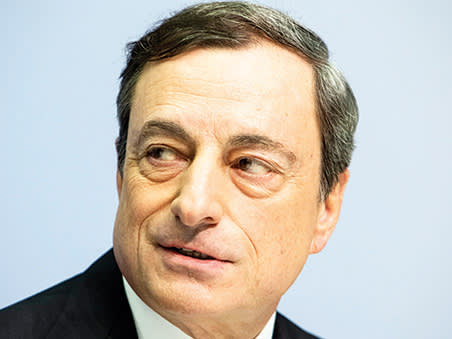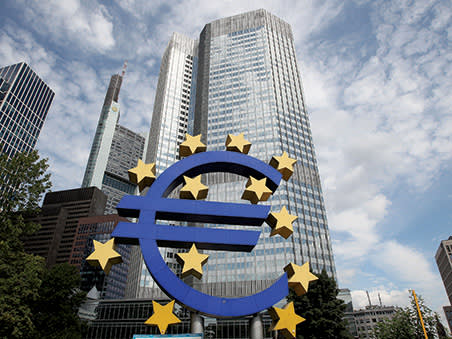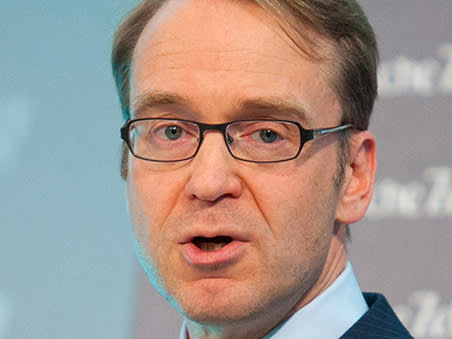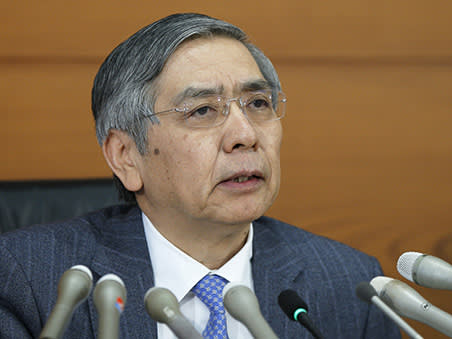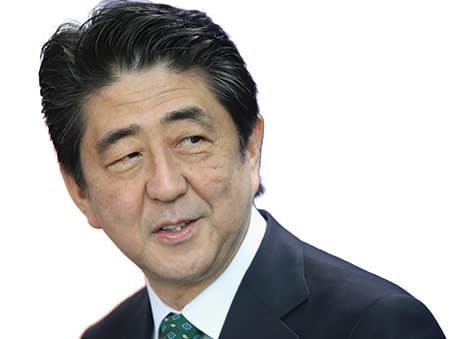That's because the smart money is betting on the ECB incorporating unsterilised purchases of eurozone sovereign debt and corporate bonds into its €1 trillion (£800bn) balance sheet expansion programme, albeit in a belated attempt to reflate the region's battered economy. It's urgently needed too as the eurozone appears to be in the grips of secular stagnation and heading towards a debt deflationary trap, too. In its December meeting, the ECB governing council slashed its inflation expectation from 1.1 per cent to 0.7 per cent for 2015, with the risk to the downside.
So with the eurozone's core measure of inflation, which excludes price changes for more volatile items such as food and energy goods, only 0.7 per cent right now - the headline rate is at a five-year low of 0.3 per cent, dangerously close to deflationary territory - and miles below the 2 per cent target rate, ECB President Mario Draghi has pledged to "do what we must to raise inflation and inflation expectations as fast as possible". The ECB governing council will reassess its stimulus measures, the size of its balance sheet and outlook for inflation, taking into account falling oil prices "early next year", which is interpreted by some market observers as a clear signal that Mr Draghi is lining up his cannons ready to fire a large barrage of sovereign quantitative easing.
The economic outlook is hardly favourable with internal demand in the eurozone subdued by a record unemployment rate of 11.5 per cent, equivalent to 18.4m workers across the region, and the ECB predicting economic growth of just 1 per cent next year. That looks optimistic. But even if achieved it would only be a third of the growth rate forecast for the US and less than half that of the UK.
So with interest rates already at rock bottom - at this month's meeting, the ECB governing council maintained its main interest rate at a record low of 0.05 per cent and kept the interest charged on a portion of banks' deposits parked at the ECB at 0.2 per cent - the ECB is attempting to expand its balance sheet from €2 trillion to €3 trillion to provide the monetary stimulus to combat the weak economic environment. The central bank has already starting making purchases of covered bonds and asset-backed securities (ABS). It’s also offering ultra cheap four-year loans under its Long-Term Refinancing Operations (LTRO) to the region's banks in order to provide ultra-cheap funding to the real economy. Bank lending is key in the eurozone as it accounts for about 70 per cent of all lending, compared with less than 30 per cent in the US, so it's a logical step by the ECB.
A problem to solve
However, the problem is that relying on these measures alone will fail to meet the €1 trillion balance sheet expansion target - and by some margin, too - nor is this the optimum way of raising inflation expectations in the shortest period of time either. For instance, in the first of the ECB's eight LTRO auctions in late September, 255 of the region's banks borrowed €82.6bn of funds from the ECB, massively below analyst expectations of €150bn and just a fifth of the €400bn line of credit the ECB had offered. Moreover, eurozone banks have been aggressively paying down borrowings from previous LTROs so the ECB's balance sheet has struggled to reflate at all. The take-up in this month's auction was just €130bn, shy of the €317bn on offer, and half of the €256bn European banks have to repay to the ECB by February from the original 2011/12 LTRO programmes.
In addition, even if the ECB could lend a net €300bn of funds to the banks through these eight LTROs, and that could be an optimistic assumption given the scale of redemptions it's receiving on prior LTROs, then it would leave the best part of €700bn to be funnelled into making purchases of covered bonds and ABSs. The problem here is that the market is simply not big enough for the ECB to be a buyer on that scale.
That's because, according to the latest data available, there are only €1.75 trillion-worth of euro-denominated covered bonds outstanding and around €750bn of ABSs, giving a total market size of €2.5 trillion. In other words, the ECB would have to buy up almost 30 per cent of these assets to hit its €1 trillion balance sheet expansion! That's clearly not going to happen, which leaves the ECB with little alternative but to adopt the unconventional money printing exercises that have been so successfully carried out by both the US Federal Reserve and the Bank of England. And if the smart money is right, then full-blown quantitative easing (QE) could happen in the first quarter next year.
Un-sterilised bond purchases
The most obvious market for the ECB to target is EU sovereign debt. It's the largest market, too, as the 18 member states have issued just shy of €7 trillion of government bonds, so the ECB could hit this liquid market hard. That's one reason why sovereign bond yields for a host of eurozone nations have hit record lows in the past month as investors bet that the ECB will embark on full-blown QE in an attempt to reverse the plunge in inflation. For instance, 10-year bond yields are trading at record lows of 0.7 per cent in Germany, below 1 per cent in France and at less than 2 per cent in both Italy and Spain. Economist Dave Rosenberg at wealth management firm Gluskin Sheff estimates that current yields suggest sovereign bond markets are priced 80 per cent of the way to classic QE.
Of course, the weak eurozone economy is the main reason why sovereign bond yields are so low in the first place as bond investors position themselves for anaemic economic growth. With domestic demand weak and EU sanctions against Russia further undermining growth prospects, and the economies of Germany and Italy contracting in the second quarter and France stagnating, the International Monetary Fund (IMF) forecasts that there is a 40 per cent chance the region will enter recession. The IMF also estimates that there is a 30 per cent chance the eurozone will slide into deflation.
In the circumstances, it seems a live possibility that the ECB will target the corporate bond market, and probably before it starts buying sovereign bonds, by engaging in open-market bond purchases in order to drive down yields and the borrowing cost of large companies. According to analysts, aggregate issuance is around €1.4 trillion in this market, of which investment-grade corporate debt in the benchmark euro index accounts for around 30 per cent of the total.
The logic here is that ECB buying of large company debt would incentivise credit creation, and act as a mechanism for capital to flow to small and medium-sized enterprises (SMEs). That's because intra-sector loans and trade credits account for 40 per cent of the total debt of non-financial companies in the region. Or put it another way, if European banks are failing to boost credit to SMEs - as appears to be the case - then the ECB can circumvent this by tempting large corporations to tap into low-cost funding by driving down yields in the corporate bond market. In turn, some of these cheap funds raised on new issuance will flow through to SMEs by the back door.
Wealth creation
If the ECB does press the button on full-blown QE, then one consequence is a further weakening of the euro - and against the US dollar, in particular. That's only logical as the law of supply and demand dictates that if a central bank attempts to boost the size of its balance sheet by 50 per cent, and is hell bent on driving down bond yields too, then investors will demand a more favourable exchange rate to hold assets in the currency. Moreover, given the US Federal Reserve looks set on a tightening cycle as the country's economy recovers - the IMF predicts the US economy will grow by 3.1 per cent in 2015 - then it's only rational to expect the dollar's strong bull run against the single currency to continue.
That's important because as a rule of thumb a 10 per cent depreciation of the euro against the US dollar translates into a 10 per cent earnings upgrade for corporate Europe. So the likely devaluation of the euro due to ECB money printing will give a boost to eurozone corporate earnings, and in turn will be positive for equity markets.
Of course there is a positive wealth effect from central bank buying of sovereign and corporate debt as the increase in bond prices produces capital gains for current holders of these assets. As we have seen with the QE programmes in both the UK and US, some of these realised gains are then channelled into higher-risk assets as investors move up the risk curve in search of yield, so there is a positive knock-on effect on a whole host of asset prices beyond just corporate and government bonds.
It's also worth noting that European banks hold a large portion of the eurozone sovereign debt so QE is a way of helping them to recapitalise through windfall profits on these investments. And the dominance of banks in the region's financial system means the portfolio rebalancing effect, as investors (and banks) move up the risk curve, is likely to be far stronger in Europe than it has been in the US. In turn, the profits made on bond holdings can be used for proportionately greater bank lending to stimulate growth.
Super Mario sets his stall
It's fair to say that not everyone is convinced of the merits of money printing and no one is more vehement in their opposition than German Bundesbank president Jens Weidmann. His view is that the greatest bottleneck for eurozone growth is neither the lack of monetary stimulus, nor fiscal stimulus, but structural barriers that impede competition, innovation and productivity.
Interestingly, Mr Weidmann also believes that the factors behind the sharp fall in eurozone inflation - lower energy prices and the adjustment processes in eurozone countries that are following austerity programmes in an attempt to cut their budget deficits - cannot be influenced by a change in monetary policy by the ECB. Mr Weidmann also opposes money printing as he views this as an unacceptable transfer of risk from the financial institutions to taxpayers.
However, despite the opposition from the German members on the ECB's governing council, this will not be enough to stop the central bank from taking the logical and final step and embarking on full-blown QE. Mr Draghi said as much in the press conference post this month's ECB meeting of the governing council, noting bluntly that: "We do not need unanimity". He also stressed the importance of the ECB's inflation mandate and stressed that the ECB would not "tolerate a prolonged deviation from our mandate that would cause an unwanted tightening of our monetary policy".
And that's why "early next year" the ECB's governing council will "reassess its stimulus measures, the size of its balance sheet and outlook for inflation, taking into account falling oil prices". Since falling inflation expectations result in an unwanted tightening in ECB monetary policy because it increases real interest rates - exactly the opposite of what the eurozone needs right now - the odds of the ECB launching its bond bazooka have narrowed dramatically. It's time to get ready for the ECB firework party early next year.
The land of the rising sun
Undoubtedly, Mario Draghi will be trying to stop a deflationary price environment encompassing the eurozone at all costs. The deflationary experience of Japan, the world's third-largest economy, over the past 15 years is reason enough to avoid this economic nightmare, something that Japanese prime minister, Shinzo Abe, and Bank of Japan governor, Haruhiko Kuroda, are all too well aware of.
Following his election in December 2012, Mr Abe's LDP government entered a signed pact with the central bank at the start of last year to steadily promote "measures aimed at establishing a sustainable fiscal structure with a view to ensuring the credibility of fiscal management". The target is to halve the country's primary deficit as a percentage of GDP by fiscal 2015 and to move into surplus by 2020.
The central bank's part of the bargain is to provide the monetary stimulus to the economy with the aim of getting core inflation back to the 2 per cent target rate by the next fiscal year. There is little chance of hitting that target now as the negative effects of a falling crude oil price (Japan is a net importer), an economy that fell into recession in the third quarter of this year, and consumer demand held back by the government's increase in the consumer sales tax from 5 per cent to 8 per cent in April, resulted in core inflation dipping below 1 per cent to a 13-month low.
That said, Mr Kuroda is a man undeterred and he shocked the markets last month by ramping up the Bank of Japan's QE programme from an annual target range of Y60 trillion to Y70 trillion to Y80 trillion, or around 15 per cent of the country's GDP. To put this into some perspective, it's the equivalent of buying £430bn of the country's government bonds over the next 12 months, or 20 per cent more than the Bank of England purchased in UK gilts over the past five years. In November alone, the Bank of Japan is believed to have purchased Y11.2 trillion (£60bn) of government bonds, or 5 per cent more than the total net issuance by the finance ministry. As a result of bond buying on this scale, two-year yields are now in negative territory and some of the country's largest Japanese bond fund managers believe that five-year yields (currently a record low of 0.095 per cent) could go the same way. The 10-year bond yield is 0.43 per cent, or a fifth of that in the UK.
It's paramount that interest rates are kept at record lows given Japan's debt mountain: at the last count it was more than one quadrillion yen. Interest payment on this debt pile accounts for 3 per cent of Japan's GDP, money that could otherwise be used for investment or tax cuts. Over 15 per cent of Japan's tax revenue is needed to pay the interest on borrowings so huge that they equate to 245 per cent of the country's GDP. It is set to balloon even further given the stated programme of bond buying and in effect monetising the Treasury issuance in this way. Rating agencies have taken note and earlier this month Moody's downgraded its credit rating on Japanese bonds, albeit at A1, the rating is still the fifth highest possible.
In the circumstances, it's hardly surprising that the Yen has been in freefall in the foreign exchange markets as Mr Abe's flexible fiscal policy and structural reforms, combined with ultra-east monetary policy pursued by the Bank of Japan to drive down government yields to record lows, is hardly supportive of positive currency flows. In fact, the Yen has fallen 9 per cent against the US dollar since Halloween when Mr Kuroda announced the latest ramp-up in QE. It's only reasonable to expect a further devaluation as the US central bank moves to normalising interest rates next year, the polar opposite of the policy being pursued by the Bank of Japan.
Boost to Japanese equities
Interestingly, and perhaps by no coincidence either, the Government Pension Investment Fund (GPIF) has announced that in the interests of diversifying its asset allocation, it will be cutting its holdings of Japanese government debt from 53 per cent to 35 per cent of its total assets and double its equity allocation to 50 per cent. To put this into some perspective, the GPIF will have to buy around £90bn of equities.
It's debatable whether the Bank of Japan knew of this decision when it announced the ramp-up of its own QE programme on 31 October, but it's clear that with the central bank aggressively buying Japanese government bonds, and billions of Yen set to be recycled by the GPIF into the Japanese stock market, then the net effect is designed to lift equity prices and create a positive wealth effect.
Whether Mr Abe and Mr Kuroda succeed in reversing the deflationary trend is another thing altogether: falling oil prices could see CPI fall to as low as 0.7 per cent in the first half of next year, according to some economists, assuming an oil price of around $75 a barrel and a US dollar:yen cross rate of $1:Y120. Such a backdrop would undermine the move to change the deflationary mindset of the Japanese. Furthermore, Mr Abe called a snap election earlier this month (14 December) and wants to push back the next hike in the consumer sales tax (scheduled for October 2015), which in turn could delay the next part of his fiscal reforms: cutting the corporate tax rate in June.
But whether this monetary and fiscal experiment works in the end is academic for now as investors are more concerned with the Bank of Japan's shock and awe tactics of aggressively rolling the printing presses to pursue a policy that is positive for Japanese equities, government bonds and is designed to undermine the value of the yen.




